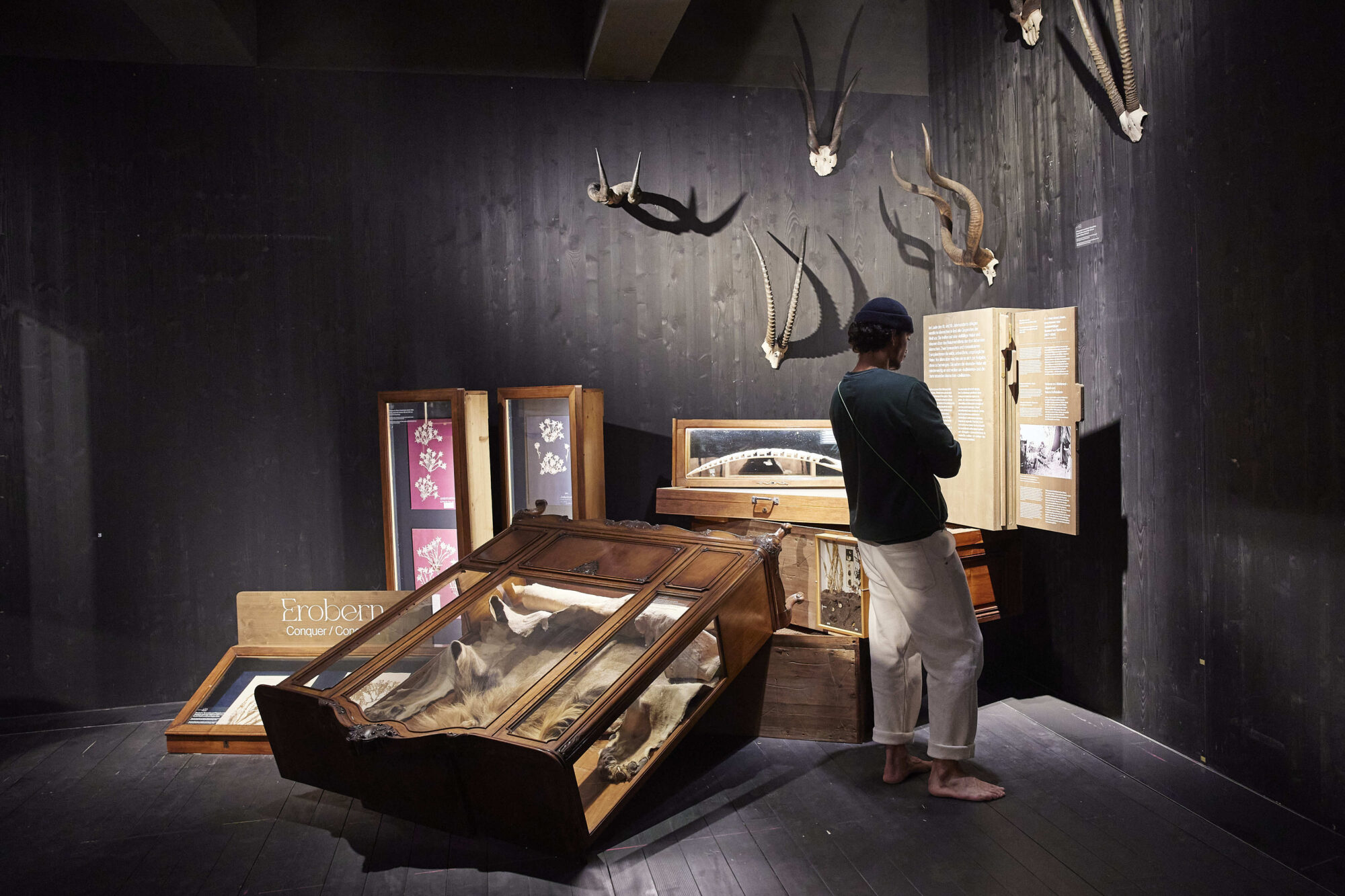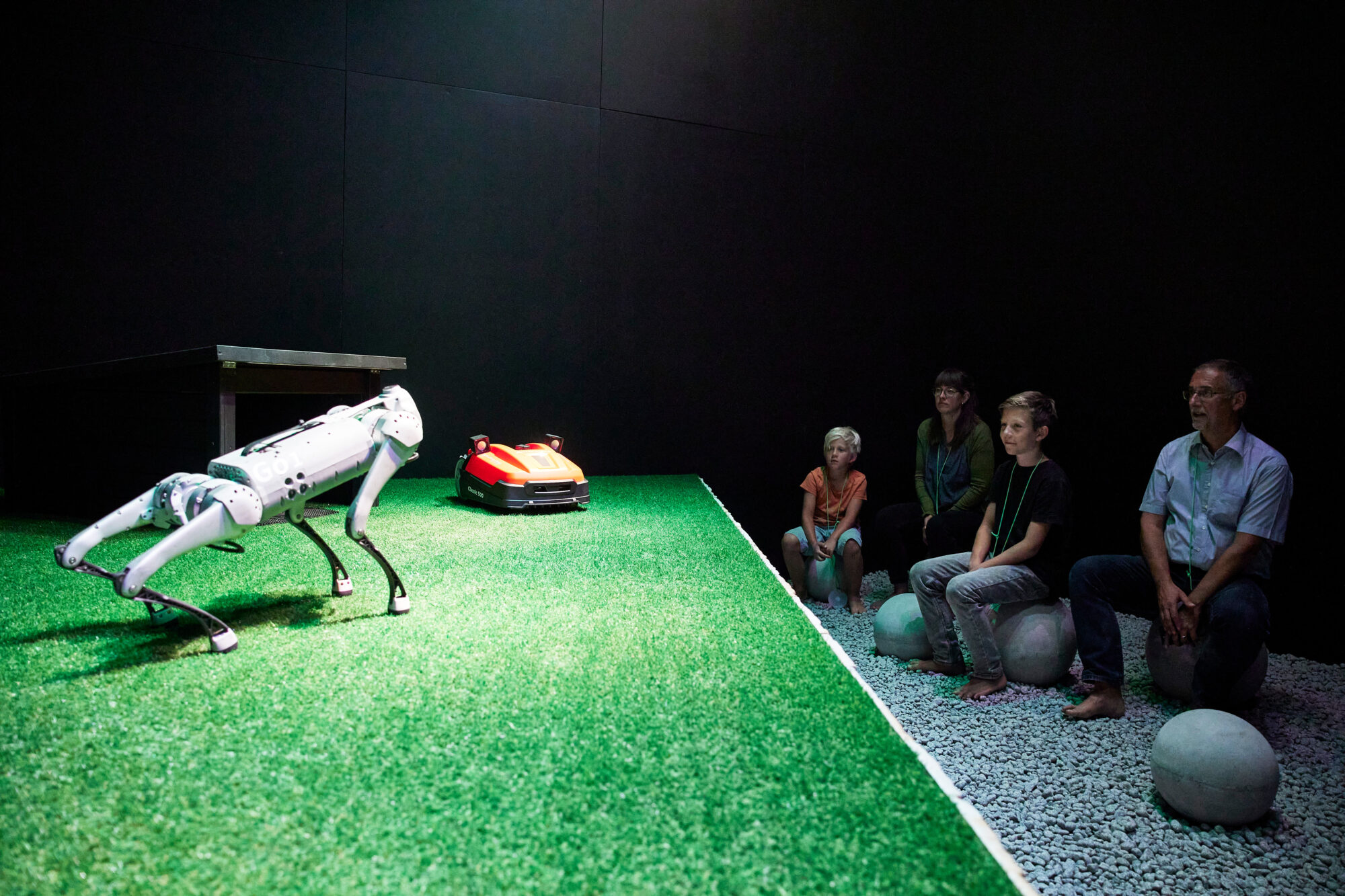Nature. And us?
Intro
A journey inside
With our feet, we stand on the ground and are connected to the earth. In everyday life we hardly notice this: we slip our feet into shoes and socks, sometimes they are even considered disgusting and shameful. But we’re actually missing out on so much: when we take our shoes off and venture down new paths, a new sensory experience opens up. In the exhibition, it said: Feel the sand between your toes and dare to tread on uncertain terrain!

Nature and culture
Where our concept of nature comes from
We explore and conquer, protect and sell it. We fear and admire it at the same time: nature. But there is no one, sole nature. The ideas we have about nature are always in flux and shaped by culture.
The "natural objects" collected in the exhibition told stories about what we imagine nature to be and what we have done with it.

What nature means to us
In the supermarket, we want the most natural lettuce possible and we want ski slopes to be covered in snow, even if it doesn’t fall from the sky. We call an exterminator to fight the pigeons on our roof, for the penguins in the zoo we have a new enclosure built. Looking at "nature" from different perspectives and becoming aware of our projections, teaches us a lot about ourselves and the time we live in. At three listening stations, a psychologist, a shaman, a forester and many more talked about our projections on nature.
Anthropocene
Of the earth’s critical state
Rising temperatures, melting glaciers and extinct species. The connections are complex, but one thing is becoming increasingly clear: we humans are fundamentally changing the earth. The core of the exhibition illustrated the human impact on the earth and the consequences of this in the form of satellite images and graphics.

"Imagine ... "
Eight pavilions opened up surprising perspectives and invited guests to rethink our relationship with nature. They were based on research approaches and schools of thought that inspired the Stapferhaus and the scenographer team during the preparation phase. Researchers and authors became "patrons" of the individual pavilions. Sometimes personally with advice and assistance, sometimes through their publications and theories.







The great debate
What has to be done?
Whether we should save the world and if so, how: we rack our brains over this and sometimes get into arguments. The proposed solutions were based on different world views regarding the relationship between humans and nature. Four types had their say in the debate: the un-concerned, the technophiles, the well-informed and the holistic. And visitors too could join the discussion with the help of their compass.
Your own compass
What does nature mean to you?
The exhibition "Nature. And us" does not present solutions, but opens up spaces for thought and perspectives and invited visitors to take a stand and get involved in the debate. They could use an RFID compass to answer various questions about their own relationship to nature.
